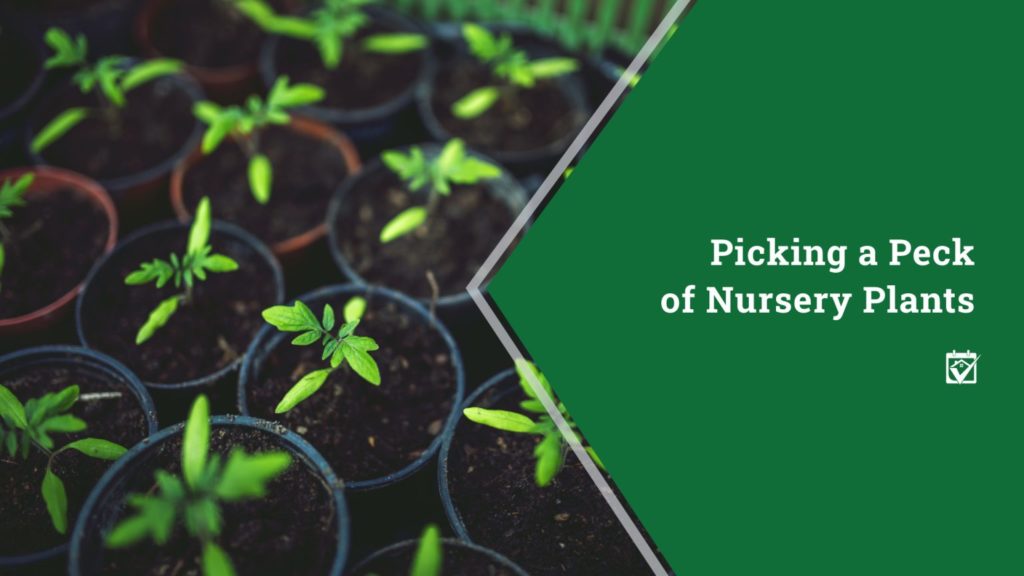
Choosing the Best Nursery Plants
Spring is a great time to get things done around the home, and this includes revamping your landscaping. Maybe you’ve always wanted to add flowers and other plants but have never had the time, or you just want to expand on what’s already growing around your home. Regardless of why you’re shopping for new plants, knowing what to look for to find the best new plants will save you a lot of frustration and wasted effort in the long run. Here are some things to keep in mind the next time you hit the nursery.
Check the Leaves, Stems, and Roots
A lot of people buy plants based on the early appearance of flowers and buds, but that can be misleading. If you want a better idea of how healthy a plant is, there are much better places to look. Some of the biggest indicators come in the form of the leaves and stems. You want to pick plants with undamaged leaves that have vivid colors that are even across the plant, with no signs of wilting, yellowing, or drooping. Stems should have smooth surfaces, as opposed to cracks or rough patches which can be signs of insect damage or other problems.
Another way to check the health of a plant before buying it is to examine the container it’s growing in for signs that the plant may be root-bound. While you won’t always be able to tell, there are a few signs that could indicate a problem. Plants with root tendrils growing out of drainage holes in the container or obvious root growth across the surface of the soil have clearly been in containers that are too small for too long. It can take a long time for root-bound plants to recover fully, and some never will, so avoid plants that show signs of this problem.
Look for Signs of Trouble
It was mentioned that you should look for signs of insect damage when looking at leaves and stems, but holes in the leaves or marks on the stem aren’t the only indicators that a plant might have been damaged by insects. Spots on the top or bottom of leaves, signs of webbing, or oddly shaped leaves and buds can also signal that insects have been on the plant. Feel the leaves and stems as well to see if they feel sticky or excessively soft, both of which could indicate small insects have infested the plant itself. Also, take a look at the soil for signs of insect activity, especially if it looks like something has burrowed down into it.
You should also compare the plant you’re considering to others of its type. Look for signs of disease, such as the plant being generally paler than others, or spots or discolorations on its stems and leaves that are either darker or lighter than the rest of the plant. Color patterns or patterns on leaves or stems that appear on one plant and aren’t present on the others can also be a sign of disease that you don’t want to spread to other plants around your home.
One other potential sign of trouble that you should keep an eye out for is grass, weeds, or other types of unexpected plants growing in the same container as the plant you’re buying. While these often won’t directly attack your plant and can be easily removed, they are still competing with the plant for the same water and nutrients in the container. This can weaken the plant and lead to growth and development problems down the road.
Getting a Second Opinion
If you aren’t sure about which plants are best, don’t be afraid to ask the nursery workers about the various plants you’re considering. They can give you an additional insight into the health of these plants and how well they’ll do in different lighting conditions in your yard. They’re there to help, so be sure to make use of that resource.
For information on buying or selling a home or if I can help you in any way, contact Michelle Lohman or email me at michelle@michellelohman.com.
Michelle Lohman, Associate Broker
Realty One Group

All content provided on this blog is for informational purposes only. The owner of this blog makes no representations as to the accuracy or completeness of any information on this site or found by following any link on this site. The owner will not be liable for any errors or omissions in this information nor for the availability of this information. The owner will not be liable for any losses, injuries, or damages from the display or use of this information.

Leave a Reply
You must be logged in to post a comment.